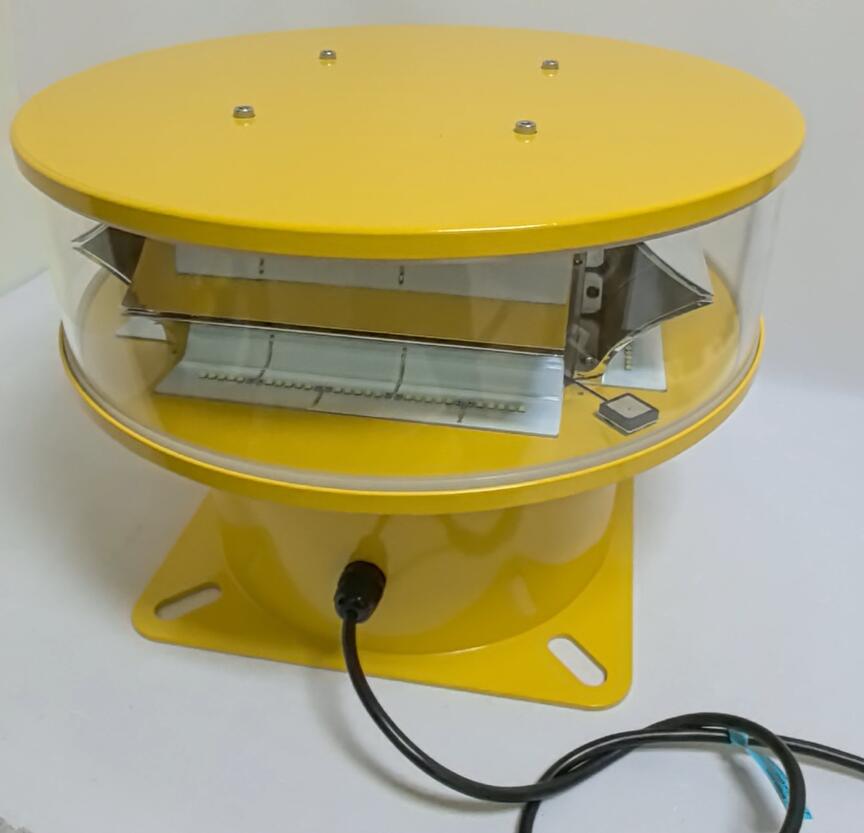Posted: 2025-04-09
As airspaces become increasingly congested with commercial flights, drones, and urban air mobility vehicles, aircraft warning systems have emerged as critical components of aviation safety infrastructure. These technologies serve as the first line of defense against mid-air collisions and ground accidents, evolving far beyond simple flashing lights to sophisticated integrated safety networks. This article examines the current state and future trajectory of these life-saving systems.
The Expanding Role of Aircraft Warning Technology
Modern aircraft warning solutions address multiple risk scenarios:
Obstacle Collision Prevention
Tall structure marking systems

Terrain awareness warnings
Mobile obstacle detection
Traffic Conflict Alerts
TCAS (Traffic Collision Avoidance Systems)
| aircraft warning |
ADS-B (Automatic Dependent Surveillance-Broadcast)
Drone detection networks
Approach Path Protection
Runway incursion prevention
Glide slope monitoring
Airport perimeter security
Breakthrough Technologies Redefining Safety Standards
1. Next-Generation Lighting Systems
Adaptive LED arrays that automatically adjust intensity based on visibility conditions
| aircraft warning system |
Solar-powered wireless warning lights with 10-year lifespans
Infrared-compatible markers for military and low-visibility operations
2. Smart Detection Networks
LiDAR-equipped towers creating 3D safety perimeters
AI-powered cameras identifying potential airspace conflicts
Predictive analytics forecasting collision risks
3. Integrated Alert Systems
Cockpit display integration showing real-time obstacle maps
Haptic warning systems for pilot tactile alerts
Automated drone rerouting via UTM (UAS Traffic Management)
Regulatory Landscape and Compliance Challenges
The global aircraft warning standards framework faces new pressures:
Key Regulatory Bodies:
ICAO (International Civil Aviation Organization)
FAA (Federal Aviation Administration)
EASA (European Union Aviation Safety Agency)
Emerging Compliance Issues:
Standardization for urban air mobility vehicles
Drone detection requirements for critical infrastructure
Cybersecurity for connected warning systems
Case Study: Urban Air Mobility Integration
London's Skyway Project demonstrates next-gen aircraft warning integration:
Network of 150 smart beacons along flight corridors
Real-time data sharing between aircraft and infrastructure
94% reduction in near-miss incidents during trial period
Future Horizons: 2025-2030 Projections
Quantum Radar Systems
Unprecedented detection accuracy
Immune to conventional jamming
Bio-inspired Warning Designs
Bird flock avoidance algorithms
Bat-inspired ultrasonic markers
Space-Based Monitoring
LEO satellite networks
Global low-altitude surveillance
Implementation Challenges and Solutions
Obstacle: Light pollution concerns
Solution: Directional, aircraft-specific illumination
Obstacle: Rural area power requirements
Solution: Kinetic energy harvesting from wind
Obstacle: System interoperability
Solution: Universal aviation safety protocols
Cost-Benefit Analysis of Modern Systems
While advanced aircraft warning technologies require investment:
1inpreventionsaves37 in accident costs (FAA estimate)
300% ROI over 5 years for smart systems
Liability insurance reductions up to 40%
Toward Accident-Free Aviation
The future of aircraft warning systems lies in their transformation from passive markers to active participants in aviation safety ecosystems. As these technologies become more predictive, connected, and intelligent, they promise to virtually eliminate preventable aviation accidents. The industry's challenge now lies not just in technological development, but in creating frameworks for global adoption and standardization.
These silent guardians of our skies continue their quiet revolution - ensuring that as aviation advances into its next century, safety remains not just a priority, but an inherent characteristic of flight itself. The next decade will see aircraft warning systems evolve from protective measures to predictive partners in aviation's increasingly complex operating environment.